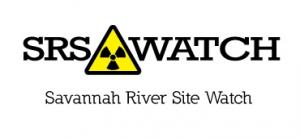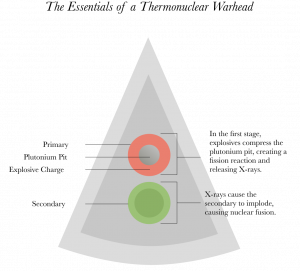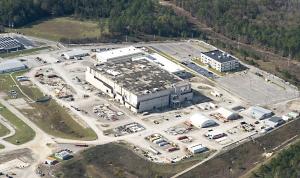
DOE Admits Design Problems with Controversial New Plutonium Bomb Plant at Savannah River Site, Cost Soars to $25 Billion

SRS Watch is a non-profit public-interest organization located in Columbia, South Carolina, that monitors policies and programs of the U.S. Department of Energy, with a focus on the Savannah River Site located near Aiken, SC.
Anticipated DOE Funding Requests for SRS Plutonium Pit Plant, Key to New Nuclear Warheads, to Hit $9 Billion Over the Next 5 Years
COLUMBIA, SC, US, March 14, 2024 /EINPresswire.com/ -- On the heels of releasing information that the design of proposed plutonium bomb facility at the Savannah River Site in South Carolina “continued to trend negative,” the Department of Energy has admitted in budget documents released this week that the cost could hit a staggering $25 billion.
The massive cost increase, rising from an estimated $11.1 billion in June 2021, was reflected in DOE’s National Nuclear Security Administration’s (NNSA) Fiscal Year 2025 budget request to Congress, posted on March 11, 2024. Like all complex DOE projects, such as the plutonium fuel (MOX) project canceled at SRS in 2018, significant delays and large cost overruns related to design and technical problems are standard and, as congressional oversight is minimal, tend to get worse over time. The abandoned MOX building, now being stripped of all costly installations, is proposed to be converted into the pit plant.
If it ever operates, the SRS Plutonium Bomb Plant - which DOE calls the more innocuous “SRS Plutonium Processing Facility” - would be key in fabricating the plutonium pits, or cores, for both new and existing U.S. nuclear warheads. The weight of a spherical, hollow pit is classified but it’s around a few kilograms of plutonium (much of which was made in nuclear reactors that operated at SRS until the late 1980s). The first new pits would go into the W87-1 warhead planned for the new Sentinel ICBM, a project whose cost has also soared dramatically and whose need has faced growing questions.
“The pit facility is central to a brewing nuclear arms race and thus should be unwelcome in South Carolina but contractor profits are driving its location here,” said Tom Clements, director of the public interest group Savannah River Site Watch, based in Columbia, SC. “Given the massive cost overrun projected for the SRS pit plant and the growing threat of the unconstrained pursuit of new nuclear weapons, it’s time for cooler heads to prevail and for the government to hit the pause button on this misguided and unnecessary project,” added Clements.
The goal for the SRS pit plant is to produce 50 or more pits per year, with the Los Alamos National Lab making 30 or more pits per year, initially to be used in new warheads. Though it has not been clearly stated by NNSA, it appears, according to SRS Watch, that the long-term goal is to replace all pits in all 4400 active and reserve warheads, keeping the U.S. on a footing to fight a full-scale nuclear war.
Reflecting the dramatic increase in the cost of the facility from the 2021 estimate, NNSA has proposed to spend over $9 billion on the controversial SRS facility over the next 5 years. The request for FY 25 is about $1.3 billion. In the recently passed funding for DOE, the SRS pit plant received $1.06 for FY 24.
In a February 23, 2024 response to a Freedom of Information Act request by the public interest groups Savannah River Site Watch, Nuclear Watch New Mexico (Santa Fe) and Tri-Valley CAREs (Livermore, CA), and later posted on line, DOE’s National Nuclear Security Administration revealed in a review of contractor performance that the design of the SRS facility faced problems and delays. The FY 23 Performance Evaluation Report (PER) for contractor Savannah River Nuclear Solutions stated that project “design continued to slip in FY23” and “the design performance measurement baseline completion date continued to trend negative due to less than adequate design integration.”
The original goal was to have the SRS pit plant operable by 2030 but that date has quickly slipped to 2036, according to a NNSA document obtained by SRS Watch via a FOIA request. (NNSA’s “Critical Decision (CD)-1 Independent Project Review (IPR),” March 2021, obtained by SRS Watch via a FOIA request, see page 24 for 2036 operational date of SRS pit plant: https://srswatch.org/wp-content/uploads/2023/01/Doc-1-SRPPF-CD-1-IPR-Final-Report-210505-2.pdf)
Pit production would produce a large amount of radioactive plutonium waste, called transuranic waste (TRU), aimed to be disposed of in DOE's Waste Isolation Pilot Plant (WIPP) in New Mexico. But is unclear if WIPP, whose volume is capped by federal law, could accommodate the amount of TRU projected to result from pit production. SRS Watch and allied non-profit groups (named above) have a lawsuit in federal court in Columbia, SC - Docket 1:21-cv-1942 - aimed at forcing NNSA to prepare a "Programmatic Environmental Impact Statement" (PEIS) analyzing all environmental impacts at all DOE sites involved in any aspect of pit production or disposal of waste from such production. The original case was filed in June 2021 and is proceeding on the schedule set by the court..
The FY 25 NNSA budget request indicates a “project schedule extension of approximately 1 to 3 years,” which would add billions to the cost and further undermine the claimed necessity of the project.
“Based on past DOE performance with large projects, yet more cost overruns and schedule delays are all but guaranteed; the time to stop this controversial project is now," added Clements.
Tom Clements
Savannah River Site Watch
+1 803-834-3084
email us here
Visit us on social media:
Facebook
Twitter
EIN Presswire does not exercise editorial control over third-party content provided, uploaded, published, or distributed by users of EIN Presswire. We are a distributor, not a publisher, of 3rd party content. Such content may contain the views, opinions, statements, offers, and other material of the respective users, suppliers, participants, or authors.



